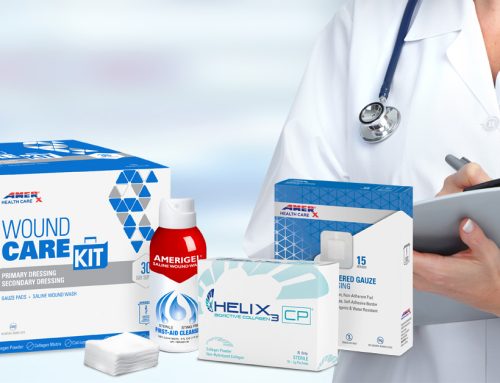When dispensing surgical dressings, it is important that the dressing size is selected appropriately based on the size of the ulcer being treated. The dressing should be large enough to cover the entire ulcer. However, you cannot expect reimbursement for a dressing when a smaller size is available that could have covered the same ulcer.
Is One Method Better Than Others?
No. A thorough literature search reveals that there are multiple accepted methods for measuring an ulcer and there is not one that is superior to all others. However, it is important is that every facility/clinic/practice choose one method, train everyone who is measuring wounds on that method, and ensure the measurement is done the same way every time. This consistency in method of measuring protects patients and ensures the accuracy of medical records.
Method One
One option is to only measure the greatest length and greatest width of the ulcer, regardless of where those fall within the layout of the ulcer. By this method, the greatest length is measured from edge to edge. When measuring in this fashion, the two measurements may not be perpendicular to one another. These two numbers can be multiplied to determine surface area.
Method Two
Another method employs reference to the layout of an analog clock. This requires considering the head 12:00 and the feet 6:00. The length measurement is then made from 12:00 to 6:00 and the width measurement is made from 9:00 to 3:00. When measuring in this fashion, the two measurements will be perpendicular to one another. In addition to length and width, depth and any tunneling, sinus tracts, or and/or undermining should also be measured.
Method Three
There are also newer, non-contact wound assessment devices that are capable of detecting ulcer borders, performing measurements, and instantly producing length, width, and surface area using a consistent method.
In Conclusion
While no one method of measuring is better than any other, consistency is important. It is suggested that one of the methods described here will be selected and done the same way by every provider within the facility and the same way every visit.
DISCLAIMER: The information provided here is intended to educate health care providers regarding compliance for ICD, CPT, and HCPCS coding. The information provided does not guarantee reimbursement and is accurate to the best of our knowledge at the time of this publication. Coding guidelines can change and we encourage you to stay up to date. The existence of a code does not guarantee payment.

Dr. Jeffrey D. Lehrman, DPM, FASPS, MAPWCA, CPC, CPMA
Dr. Lehrman is a podiatrist practicing in Fort Collins, CO and operates Lehrman Consulting, LLC which provides consultation services regarding coding, compliance and documentation. Dr. Lehrman is a Certified Professional Coder and Certified Professional Medical Auditor. He serves as a staff liaison at the AMA CPT® Editorial Panel meetings where CPT codes are created, edited, and deleted. He is a Diplomate of the American Board of Foot and Ankle Surgery, Fellow of the American Society of Podiatric Surgeons, and is recognized as a “Master” by the American Professional Wound Care Association. Dr Lehrman is a Fellow of the American Academy of Podiatric Practice Management, Past Director of the American Professional Wound Care Association Board of Directors, and is a Past Chairman of the Board of the American Society of Podiatric Surgeons. Dr. Lehrman is also on the editorial advisory board of the journal WOUNDS.





